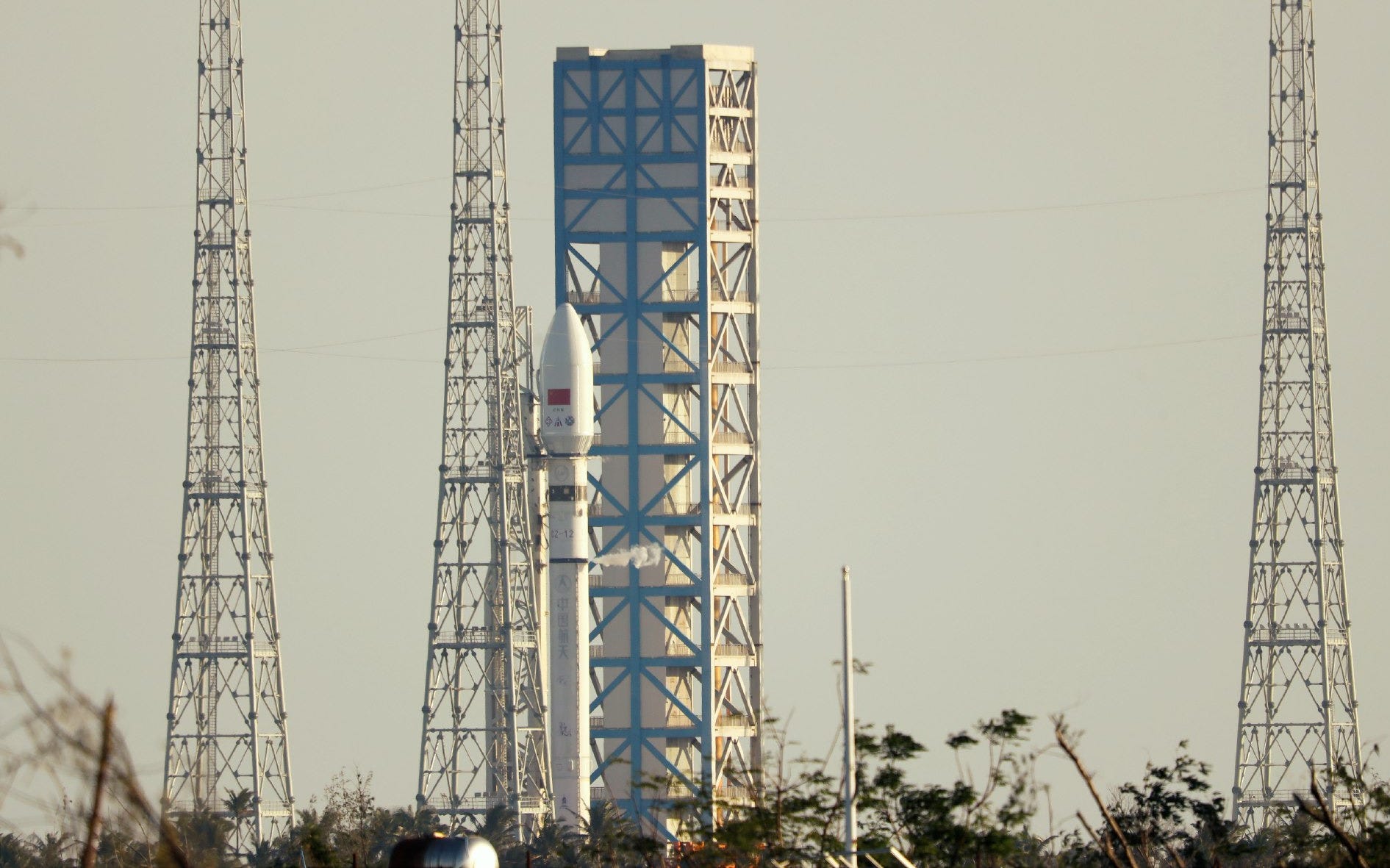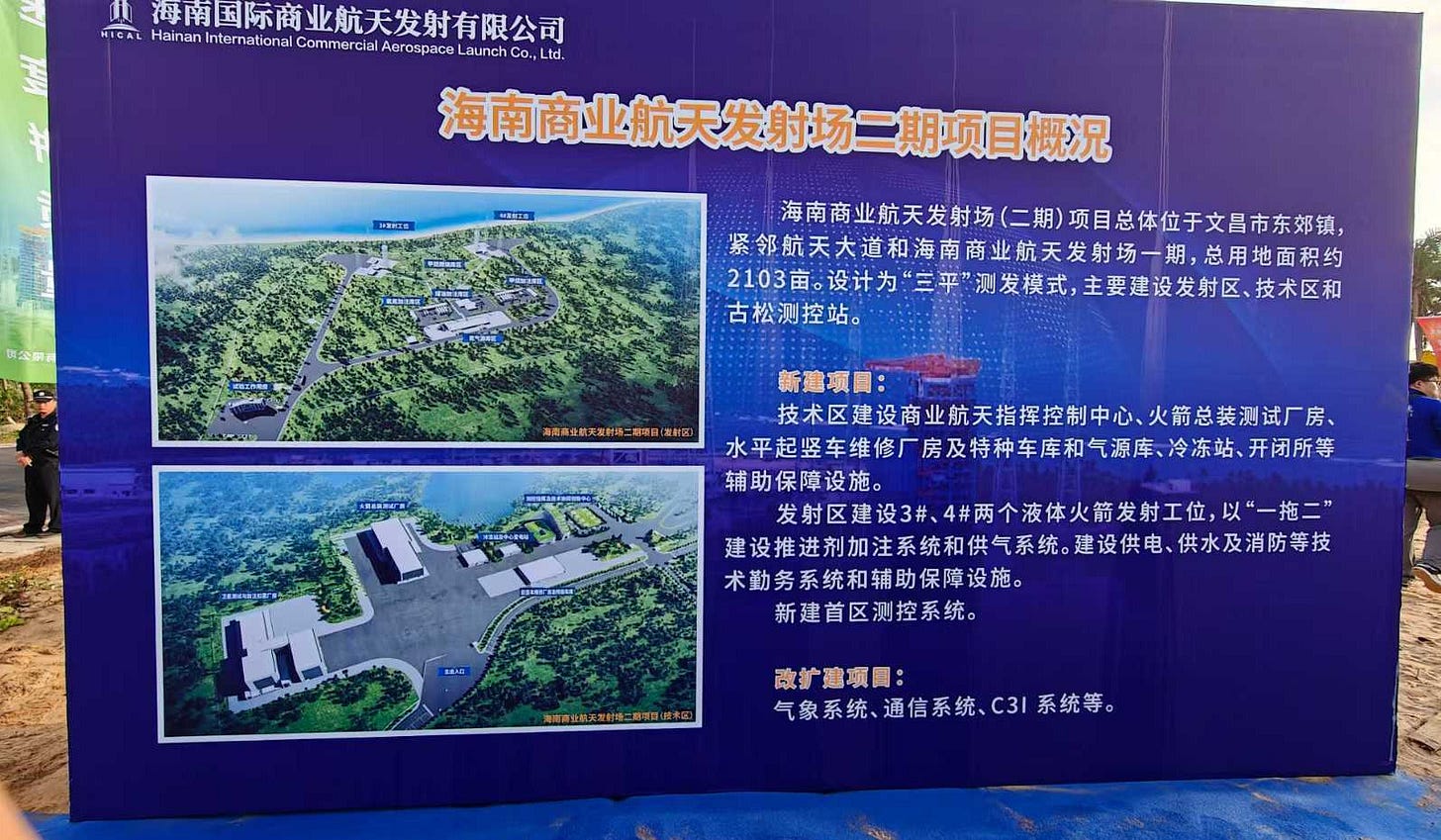Hainan and Coastal Launch Facilities Set to Expand
Three new launch pads are popping up in Hainan while Guangdong is allocating billions for a spaceport.

Hainan International Commercial Aerospace Launch Co., Ltd. (海南国际商业航天发射有限公司), often shortened to HICAL and operator of the Wenchang Commercial Space Launch Site, announced on January 25th that it had begun phase two of construction at the launch site.
Wenchang Commercial’s second phase of construction is set to take place across ~133 hectares (2100 mu), roughly 1.4 square kilometers, of coastline to build two new launch pads. The land set to house the two new launch pads sits slightly south of the two existing commercial launch pads and is sparsely populated, with residents compensated to move elsewhere.
Redundancy at Wenchang Commercial will be improved with the second construction phase as another command and control center, a rocket assembly and testing building, and a tracking, telemetry, and command station will be built. Necessary propellant fueling, gas supply, and consumables systems are also set to be constructed to support the new launch pads.

The Global Times was informed that offshore recovery sites are set to be implemented during the second phase to assist with supporting high-density launch missions. A representative of HICAL and one of the launch site’s project managers told The Global Times:
"The expansion of the project will greatly enhance the launch capabilities of the spaceport, help meet the growing demand for commercial launches in China, drive the continuous improvement of the aerospace industry chain, and create a hub for leading talent and technological innovation"
- HICAL representative
"The second phase will alleviate the bottleneck of insufficient launch resources for second-generation systems, provide ample opportunities for the development of new reusable launch vehicles, and significantly enhance the overall efficiency of China's space access"
- Launch site project manager
Previously phase one of construction took just short of twenty-nine months to build a liquid propellant multi-user launch pad and one exclusive to the Long March 8 series, with the site itself declared operational in June 2024. Commercial Launch Pad 3 and 4 will likely be built in a shorter time due to HICAL opting to build two liquid propellant multi-user launch pads, with officials believing they can be operational within two years.
Once operational the two new pads could be capable of supporting around sixteen launches per year each, like Commercial Launch Pad 2, for well over at least fifty missions annually able to be supported across the launch site. The turnaround time between flights is said to be around two weeks for the existing multi-user pad, including time to reconfigure between different launch vehicles.
Over at the state-owned side of Hainan’s launch facilities, the Wenchang Space Launch Site, infrastructure for the Long March 10 Moon rocket, and its single-core Long March 10A variant, has been making steady progress.
This progress has recently started to move skyward as what is believed to be the central core of the rocket’s launch support tower has appeared in the skyline. The central core will give the tower structural stability to withstand typhoons along with being the connection point for various service platforms, some of the launch pad’s water deluge system is also sent through the launch tower.
Work throughout 2024 on the Long March 10’s pad was largely focused on clearing land for the flame trench as well as various propellant and consumable pipelines. Additionally, last November China State Shipbuilding Corporation (中国船舶集团有限公司) announced that its subsidiary, Wuchang Shipbuilding Heavy Industry Group (武昌船舶重工集团有限公司), had signed a contract to produce the launch towers for the rockets mobile launch platform.
A timeline to complete the launch pad has not been stated yet but the single-core Long March 10A is expected to fly in 2026, while the Long March 10 Moon rocket will follow in 2027.
While Hainan has been expanding its launch facilities, Guangdong Province (广东) has recently allocated 9.245 billion Yuan (approximately 1.276 billion United States Dollars on January 25th) in initial investment for a spaceport. This spaceport is planned to be based in the small city of Yangjiang (阳江市), population 2.6 million, once the project is approved.
Yangjiang Spaceport will not be a conventional on-land launch site and will instead be similar to the Haiyang Spaceport to support sea-based launches. Facilities at the spaceport will include launch integration buildings, a command and control center, as well as an industrial park to house a cluster of commercial space companies. These facilities are said to be able to support one mission at a time in the first phase, with an increase to four in future phases.
Launches from off the shore of Yangjiang will be able to head southward into a sun-synchronous orbit and on similar eastward trajectories to the Hainan launch sites. Yangjiang’s waters have already supported launch missions with the new spaceport hoping to benefit from offering nearby facilities to the launch area, improving launch opportunities.
In October 2024 Guangdong recognized the need for a spaceport in its 2024-2028 aerospace high-quality development plan. This plan also proposed creating a strong provincial space economy between Guangzhou (广州市), Shenzhen (深圳市), Zhuhai (珠海市), Yangjiang, and other locations.



